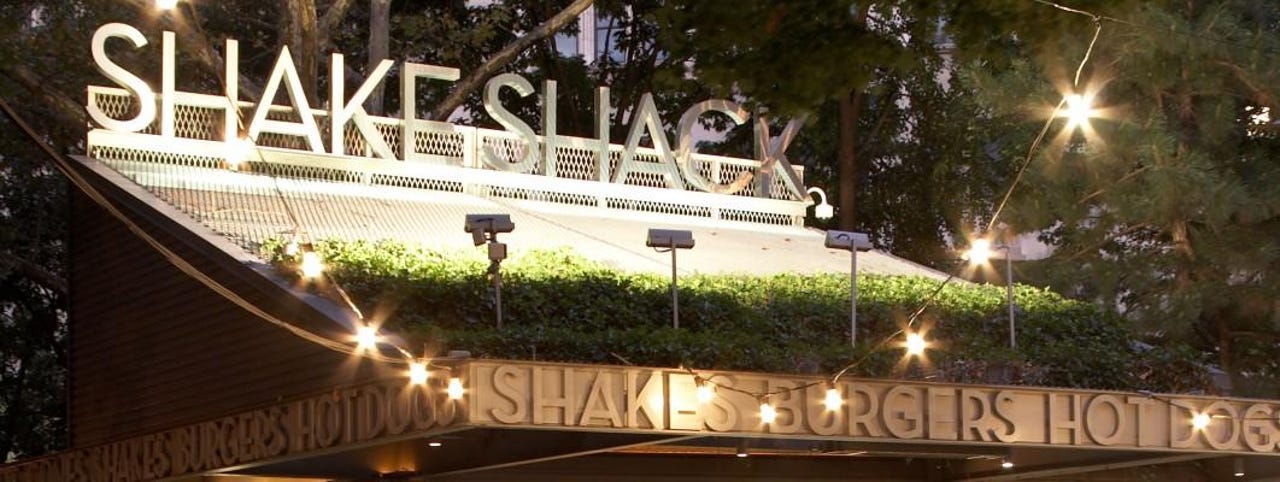How Shake Shack is betting on technology on front-end and back-end to hit $700 million in revenue in 2020


Shake Shack, best known for its burgers, is revamping its technology infrastructure to give its customers more touch points, improve efficiency enough to offset higher labor costs and scale as it expands locations and into new venues such as food trucks.
The company reported a fourth quarter net loss of $548 million on revenue of $124.3 million. For 2018, Shake Shack reported net income of $21.95 million on revenue of $459.3 million, up 28 percent from a year ago. For 2019, Shake Shack projected revenue between $570 million and $576 million with flat same store sales. For 2020, Shake Shack is targeting more than $700 million in revenue.
Also: What is digital transformation? Everything you need to know
To get to that 2020 revenue goal, Shake Shack is betting on an ERP revamp called Project Concrete, digital marketing and more ways to cater to customers. In the fourth quarter, Shake Shack booked $700,000 in one-time Project Concrete costs.
Randall Garutti, CEO of Shake Shack, said on an earnings conference call that the company's digital transformation efforts are necessary to grow. "I would like to take a moment to stress how important we believe this transformation will be in an effort to ensure infrastructure and support systems are sufficiently robust and scalable to deliver upon our current and future growth opportunities," he said. "We are investing a lot of capital in order to streamline and automate business processes, all the while taking administrative and time-consuming tasks out of the Shacks to better allow for our teams to focus on delivering the highest quality experiences."
Must read
- Survey: Companies face budget and buy-in challenges
- Five winning plays for digital transformation
- Digital Transformation On TechRepublic
- Digital transformation: Doubt and disillusion creep in as progress stalls
Based on job listings for Shake Shack, the company is implementing Workday HCM and Financials and hiring app developers as well as marketing pros familiar with MailChimp, Google Analytics and mParticle.
Meanwhile, Shake Shack added a new CIO to lead its technology infrastructure efforts. The company hired Dave Harris, who most recently was vice president of digital technology at Newell Brands. Harris was also the CIO at Yankee Candle and led the omnichannel and point-of-sale overhaul at the retailer.
Here's a look at Project Concrete in a slide:
Shake Shack said for fiscal 2019, the company will spend $3 million to $3.5 million on general and administrative Project Concrete costs. The company added that $4 million of Project Concrete costs would be capital expenditures.
Shake Shack CFO Tara Comonte, said:
Project Concrete in 2019 includes the majority of our financial, HR and procurement and inventory systems and represents a significant strengthening of our foundational infrastructure to further enable the many years of growth we see ahead.
As the company adds more stores it has to get returns on investments faster and improve operating profits quickly. In its fourth quarter release, Shake Shack detailed that its "Shack-level operating profit margin" was 22.5 percent for the quarter ended Dec. 26, 2018. That tally is down from 25.2 percent in the same quarter a year ago.
The company ended the year with 124 Shake Shacks. For 2019, Shake Shack is projecting that average unit volume for company-owned locations will be $4 million to $4.1 million with operating profit of 23 percent to 24 percent.
Also see: Wendy's cooks up digital transformation plans with kiosks, mobile apps, customer experience lab
New Shacks carry higher labor rates and costs until they hit what the company calls a "normalized operating rhythm." The other reason Shake Shack needs to become more efficient is that it needs to offset minimum wage increases.
Shake Shack said that kiosks can offset some of the labor cost increases while improving the customer experience and optimizing sales. The company has self-order kiosks in place in 16 locations.
Another way to drive sales is to use digital tools and technology to improve the customer experience and reduce ordering friction. Shake Shack recently revamped its app, piloted kiosks, tested deliver options with various partners and launched web ordering.
An app refresh included personalized content, a new design and an architecture that can add offers, marketing and delivery options.
While Shake Shack said it's early in its digital customer service efforts, average checks have increased. Garutti said just two years ago the only way to get a Shack Burger was to stand in line and order from a cashier. "Since then, we significantly expanded the number of channels available to our guests incorporating greater levels of convenience throughout the Shack experience and placing more control in our guests' hands. Today, we have 5 ways in which you can order your Shack," he said.